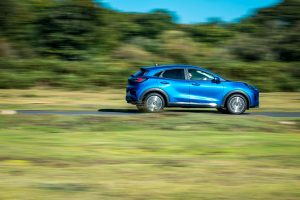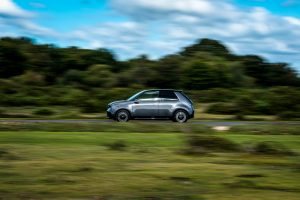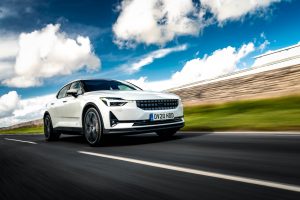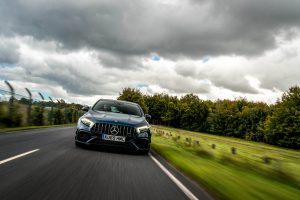While in previous years we’d merrily spend our last evening of a RTOTY shoot debating scores, arguing over opinions and ganging up on one another about infotainment systems – all while topping up on beers and burgers – this year was a little different, writes Darren Cassey.
Amidst a backdrop of a global pandemic, although legal at the time it felt irresponsible to head to one of the New Forest’s finest public houses for our debate. So instead, as the sun got low in the sky, we all said our goodbyes, bumped elbows and headed off our separate ways.
In the spirit of 2020, we replaced burgers with buffering as Zoom hosted our annual debate. Despite a difficult year for the car industry, some hugely important cars have been released.
We’ve got the return of iconic names, the future of mobility and a firecracker hot hatch sticking up for the old school. As a sign of the times, half the cars here are electric, too.
Given the timeframe, sanitising cars between every driver swap wouldn’t have been feasible with the usual number of people, so only Jack and I drove everything. As the main road testers at Blackball Towers, we’d driven some of the cars already, as well as their rivals.
Everyone else drove a couple of the key cars each, we’d all argue the toss, then the two of us ignored everyone’s suggestions to score each car how we wanted to. Just kidding… we conceded once or twice.

As usual, each car is scored out of 10 in nine categories. These cover all bases, from performance to practicality, fun to value for money, the idea being that the best all-rounder is rewarded and means less expensive cars can mix it with exotics.
However, while this is often the case, the Ford Puma didn’t see the benefit this year. Despite its resounding loss, we’re all convinced its position on the test was justified – even if it did get the lowest score in six categories.
It’s a cool-looking crossover that drives like a Fiesta, which is about as high praise as you can give any small car. It’s also fantastic value for money. But frankly, whatever we scored it, they’ll be so popular Ford won’t be able to make them quick enough.

On the face of it, the Honda e’s position in fifth is a surprise. It looks wicked and has a fantastic, futuristic interior. Its electric powertrain and on-board cleverness were rewarded with the joint-highest score in technology – tied with the eventual winner. However, it’s let down massively by practicality and value for money. While its diminutive stature plays a part in its funky styling, there’s no getting away from the fact there’s not much space inside.

Just one point ahead is the Polestar 2 – another electric car and another that might have expected to push harder for a podium spot. My only complaint about this car is that it lacks the excitement that electric cars can bring, with its motors tuned more for a relaxing drive than a kick in the backside.
In third place it’s that ode to the old school, the Mercedes-AMG A 45 S. While its bonkers petrol engine might seem out of touch with the modern world, it does feel like we’ve reached a golden era of internal combustion.

As the world goes electric, manufacturers are perfecting what came before – just imagine telling someone 15 years ago that there would be a road car making more than 400bhp from a 2.0-litre petrol engine. Oh, and it’s perfectly sedate and civilised for when you’re doing the weekly shop or taking your nan to bingo (Covid restrictions permitting, of course).
What let it down? Despite what I’ve just said, it did get the lowest score for comfort, while the fact it costs the same as a Toyota Supra makes it hard to justify its value for money. However, it got the highest scores in fun, performance and handling – arguably the most important columns for a hot hatch.

Second place goes to something at the other end of the scale, and the highest scorer for me. The Porsche Taycan Turbo feels like a next-generation electric car. It’s got otherworldly looks and it’s frankly stupid fast, let down only by the fact the Turbo we tested costs well into six figures. That Porsche badge meant it came top of the class in desirability, while those absurd performance figures saw it score joint top with the A 45 S in the performance stakes. In fact, a little more practicality might have seen it take top spot overall.
However, that’s reserved for the Defender – and what a worthy winner it is. Land Rover has taken a while to release this replacement of an icon – can you imagine the backlash if it had rushed out a stinker?

It’s been worth the wait though, with the Defender scoring well pretty much across the board. Like all Land Rovers should, it can traverse almost any terrain. We only got it mildly muddy during our shoot, but at the recent launch of the car we tackled off-road routes JLR had never let anyone outside the company drive before. And talentless yobs that we are, we made it through in one piece – this car is ridiculously capable.
We expect that. What’s more impressive is the fact that it pairs this ability with fantastic on-road manners. For those who never plan to take their Defender near so much as a dusty driveway, it doubles up as a comfortable motorway cruiser.
With its narrow sides, high driving position and light controls, it even works surprisingly well as an urban commuter. We said all-rounders do well in this test and here’s the proof.
The British motoring press can often be a bit too kind to Jaguar Land Rover. Misty-eyed favouritism is often a little too tempting to pass up, resulting in scores a star or a half higher than they perhaps should be. But there’s no denying the Defender is in a class of its own. It does it all – and then some.



































